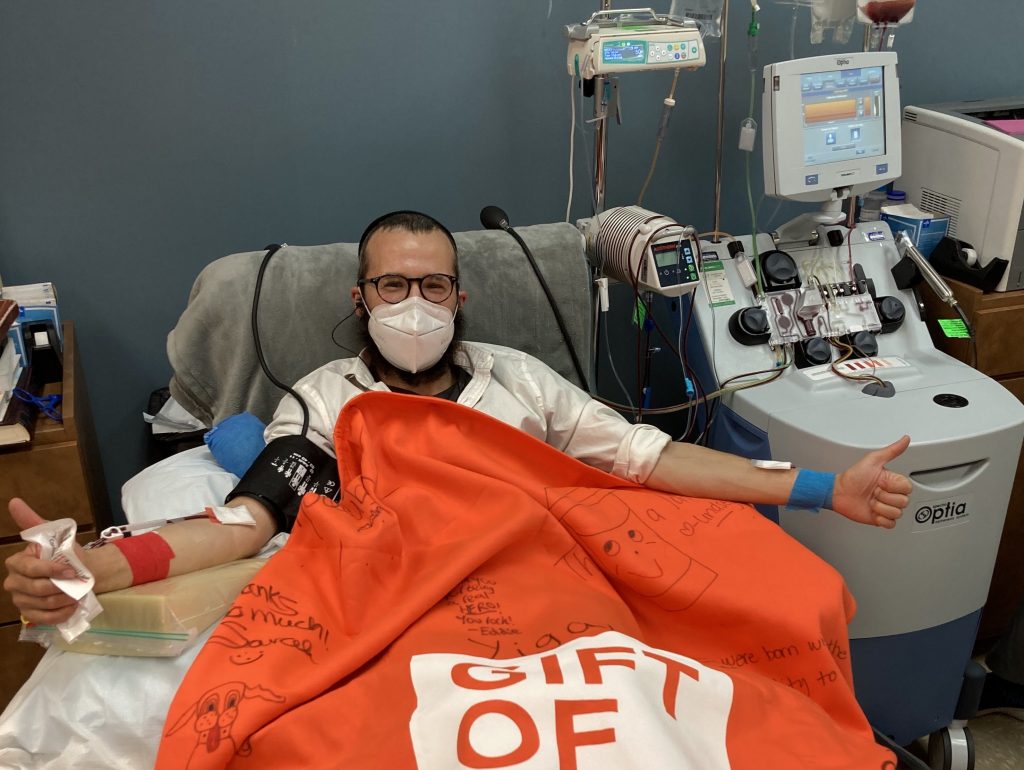Stem cell donation, on paper, might sound intimidating to many. While donating blood is straightforward and widely understood, the concept of donating stem cells feels abstract, often conjuring images of high-tech laboratories and invasive medical procedures. However, my experience has been anything but scary. Though it wasn’t a walk in the park, the process is straightforward, rewarding, and something I’d encourage others to consider.

Understanding Stem Cell Donation
What Are Stem Cells and Why Are They Important?
Stem cells are the body’s raw materials — the cells from which all other cells with specialized functions are generated. These versatile cells can develop into blood cells, brain cells, or muscle cells, among others. This unique ability makes them invaluable in treating a variety of conditions.
For instance:
- Blood stem cells play a crucial role in treating diseases like leukemia, lymphoma, and other blood disorders.
- Skin stem cells aid in tissue regeneration, offering hope to burn victims and others needing skin grafts.
- Research applications: Stem cells are also pivotal in medical research, helping scientists uncover the causes of diseases and test new treatments.
The Impact of Stem Cell Donation
Donated stem cells can save lives, offering hope to patients suffering from otherwise untreatable blood cancers or disorders. They’re used in transplants to replace damaged cells and help patients recover.
My Journey to Becoming a Stem Cell Donor
Joining the Register
I signed up for the stem cell donor register over 12 years ago. At the time, I was working at a hospital and was approached by representatives of the charity Anthony Nolan. Their mission to connect donors with patients battling blood cancers resonated with me. Joining was simple, and my name was added to a growing register of over 800,000 donors.
The Call to Donate
Months ago, I received a call that set the process in motion. A match had been identified, and my stem cells were needed for a research study. Though I’d always known this possibility existed, it was surreal to have it become real. After a phone consultation and a detailed health check, I provided written consent and prepared for the next steps.
Preparing for Donation
Health Check and Screening
Preparation began with a thorough health check. This involved:
- Blood and urine tests
- Body Mass Index (BMI) measurement
- COVID-19 screening
- A detailed questionnaire to rule out any potential risks, such as bloodborne diseases
While waiting for results, I couldn’t help but feel a bit anxious. However, my results were clear, and I was ready to proceed.
Learning About G-CSF Injections
To ensure the body produces enough stem cells for collection, donors take granulocyte colony-stimulating factor (G-CSF) injections for four days leading up to the donation. These injections stimulate the bone marrow to release stem cells into the bloodstream.
Initially, I was apprehensive about self-injecting. A nurse guided me through the first injection, which involved:
- Pinching skin on my thigh or belly
- Administering two doses daily
- Alternating injection sites to minimize discomfort
The injections were manageable, though they caused mild side effects such as backaches and fatigue. Soon, they became part of my routine: inject, eat lunch, and get back to work.
The Donation Day Experience
The Apheresis Process
Donation day arrived, and I checked into the hospital’s apheresis unit. The process, often referred to as “harvesting,” was far less daunting than it sounded. Here’s how it worked:
- A needle was inserted into a vein in my left arm to draw blood.
- My blood was processed in a cell-separating machine, which extracted stem cells and returned the rest of my blood through a vein in my right arm.
The procedure took about 2.5 hours. My left arm had to remain still, but my right arm was free, allowing me to read, play games, or enjoy a meal. The only discomfort I felt was a dull ache in my arms and occasional tingling around my mouth due to the blood thinner used during the process. Nurses provided calcium tablets to alleviate the tingling.
Heading Home
By 5 p.m., the process was complete. My stem cells were packaged and sent to a lab. I left the hospital feeling a little tired but otherwise fine. The nurses recommended drinking plenty of water and avoiding strenuous activities for a few days. Within a week, I had fully recovered and resumed my regular activities, including soccer.
Encouraging Others to Donate
Stem cell donation is far less intimidating than it may seem. The process is straightforward and relatively pain-free, with minor side effects that quickly subside. Organizations like Anthony Nolan make the experience seamless, supporting donors every step of the way.
By donating, you have the potential to save lives or contribute to groundbreaking research. If you’re eligible, I encourage you to consider joining the donor register. And if you’re called upon to donate, embrace the opportunity to make a difference.
FAQs
1. Is stem cell donation painful?
No, stem cell donation is not painful. The most common side effects are mild, such as body aches and fatigue, which subside shortly after the procedure.
2. Who can donate stem cells?
Anyone aged 16 to 30 (in some countries up to 55) and in good health can typically join a stem cell register. Specific eligibility criteria may vary by organization.
3. How long does the donation process take?
The donation procedure typically takes 2.5 to 3 hours. Preparations, including health checks and G-CSF injections, span about a week.
4. What conditions can stem cells treat?
Stem cells are used to treat blood cancers, blood disorders, and immune system conditions. They’re also pivotal in research for new therapies.
5. How can I join a stem cell donor register?
You can join a stem cell register by contacting organizations like Anthony Nolan (UK) or Be The Match (USA). The process often involves a simple cheek swab or blood sample.




